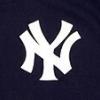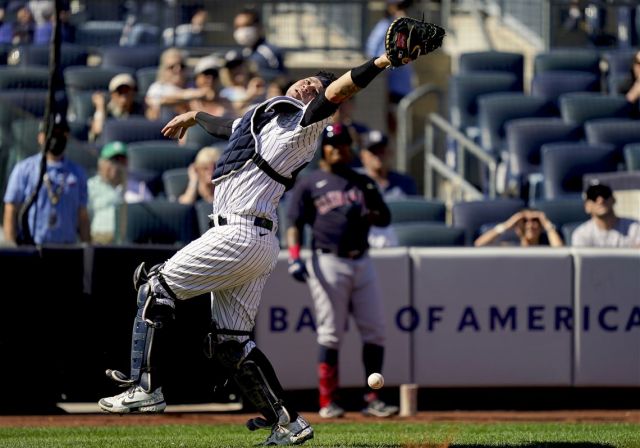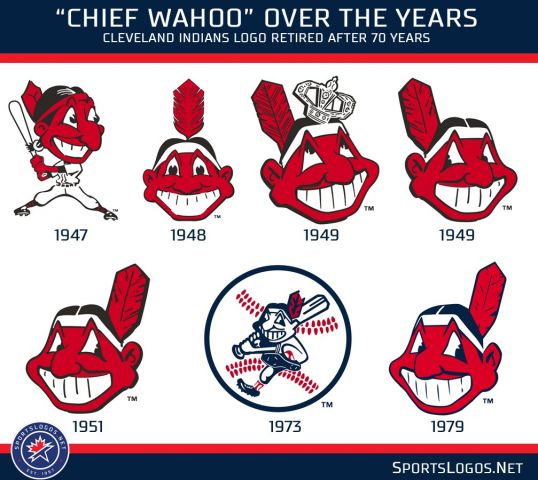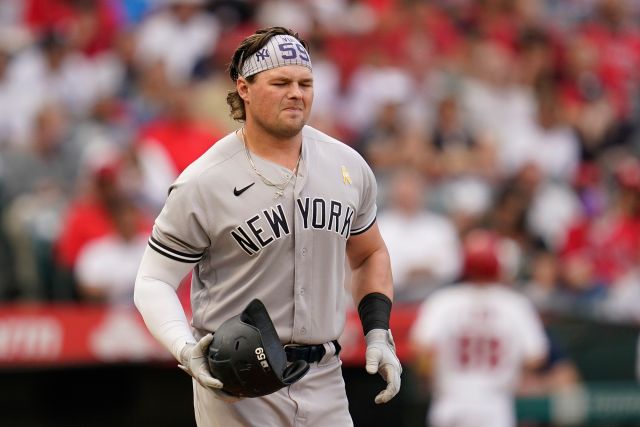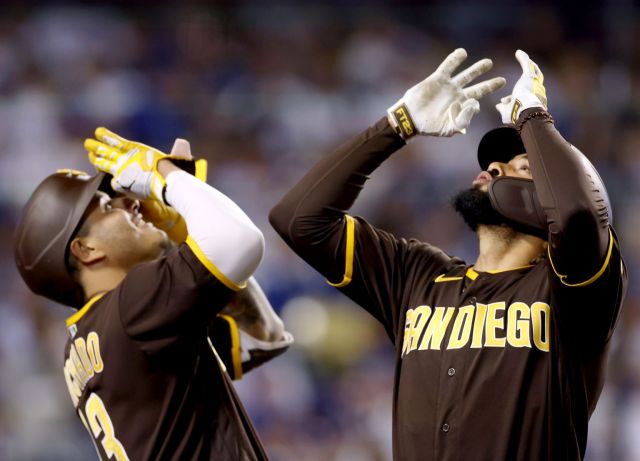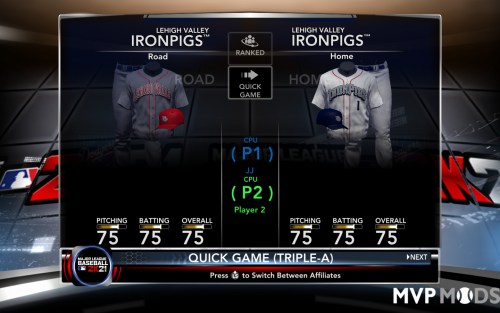-
Posts
21424 -
Joined
-
Days Won
82
Content Type
Profiles
Forums
Downloads
Everything posted by Yankee4Life
-
As soon as they are eliminated the trolls come out.
-
J.D. Martinez out for the playoff game tonight.
-
Not bad, not bad at all. And there are some people in here that think we are the only ones who can't stand Sanchez. A lot of the Yankee fan base hates him and for good reason. More good news. The Yankees designated Andrew Heaney and Brody Koerner for assignment and Greg Allen and Rob Brantly were added to the Yankees roster for Tuesday’s AL wild-card game against the Red Sox at Fenway Park.
-
No, YOU don't care. And that does not bother me at all because I just consider the source. I used that Republican analogy because it's true. Massachusetts is a democratic state and they've always been. I didn't use that example as a poke at you for any reason because you're not worth my time as I have better things to do. Jim that was no dig at the people of Massachusetts. I know I may sound at times like I can not stand the entire state but in truth it is only the Red Sox fans at Fenway Park. I recall the last time in the early 90's when I was there on a bus excursion that I wore my Yankee hat to restaurants and around town after the game and not one person bothered me. And by the way you should be proud you are one of "them." Of course. You could not resist. That's because that's how you are. Don't respond in here unless it has to do with baseball and the subject of baseball. This little back-and-forth is done right now.
-
There's more of a chance to see a Republican in Massachusetts than there is an alligator but if you look closely you will see that the name "Gator" is an acceptable name for a sports team because what the hell are you going to do, ask one of them if they mind? The San Diego Padres need to get their heads out of the clouds and address the selfishness of Tatis, Jr. The guy is simply in love with himself. Changing the name? No. Changing their attitudes? Yes. And if they want to change the name then each and every father who has lived in San Diego now or at any time should be consulted if they want the name change and if <gasp> they require counseling because the team is called the Padres.
-
The average time of a nine-inning game was 3 hours, 10 minutes, 7 seconds for the 2021 regular season. That probably does not count Red Sox games, which take a lot more to finish. The Padres (79 - 83) have probably cost their manager his job and that's too bad. Tatis was so busy posing and bringing attention to himself. He needs to mature fast. Don't count on it though. I won't underestimate the Cardinals when they have to go up against the Dodgers, who won 106 games. The only reason why the Phillies ended up in second place is that they are in the worst division in baseball. Go home Ohtani. Same for you fat Vlad. You act like Tatis but it is easy to tell you both apart since you have 150 pounds on him. Baseball talk. How's that?
-
Can someone go back and look at the great play made by Gio Urshela yesterday? The link is right here. Watch at the beginning of the video but don't look at Urshela. Watch Sanchez and watch how he was just being his usual self by just loafing after the ball. Can anyone else see this?
-
You guys are both right.
-
This afternoon in Texas will be the last game the Cleveland Indians will ever play and the way I see it that is a damned shame. So, thank you to all of you on twitter who cried, moaned and complained about this. How about trying to support something that really makes a difference in the world instead of the name of a baseball team? Naturally anyone who is sad to lose the Indians name and logo suffers from feeling immediately being labeled a racist. I'm not. I'm not even an Indians fan but I am a baseball fan who respects the traditions of the game. That is something that seems to be in the minority now. They may take the name off of the ballpark and on the field and on the uniforms but that team Cleveland will always be known as The Tribe.
-
The 2021 version of the Yankees have made me care less about this team and baseball.
-
Harper had nothing to apologize for. Not a damn thing. Now if you want apologies, look to a certain New York team. This is a forum. People are allowed to post.
-
To be fair no one on the Yankees hit yesterday so Stanton should not be singled out. Those losers only got four hits in the game while Tampa had nineteen. But there is no excuse for Torres. and certainly none for Sanchez. Sanchez went 0-for-3 with a walk, including a strikeout and a game-ending double play, to extend his slump to 6-for-31. This guy is nothing but has been piece of crap.
-
Yeah sure he did. He is entering the last game of the season hitting .308 with 35 home runs and 84 runs batted in. What does he have to apologize for? Harper had a great season but the rest of the team didn't. But this got him more attention so that is probably what he wanted. He has nothing to apologize for because any team would take those numbers for one of their starting outfielders.
-
To tell you the truth I can NOT wait to hear Boone's excuse for this loss.
-
Son of a %$&#@!!
-
Here's a question. When you have Gary Sanchez coming up to pinch hit in the ninth inning what do you expect? Answer: He strikes out! Now if you guessed that then you my friends are smarter than Aaron Boone.
-
I don't know if they were has-beens but I will say that the team has been made up of players who should not be on the roster and were in every day positions. Sanchez to begin with. They were also too right-handed a lineup. Who ever thought a Yankee team could say that? There's three games left and if they make the wild card that's great. I always want them in the post season. But really they should have won the division. I would love to see them make some decent moves and then when next year arrives have them slice through the season and win games in the same way they lost this year. All I can say is that it is about time. I hope so Jim and maybe Tampa will rest people but they are also a deep club. At a glance here are the home and road records for the three most important series' that will be played this weekend. Boston at Washington: The Red Sox are 40 - 38 on the road and Washington is 35 -42. Baltimore at Toronto: The Orioles are 25 - 53 on the road and Toronto is 44 - 33 at home. Tampa Bay at New York: Tampa Bay is 46 - 32 on the road and the Yankees are 45 -33 at home. Should be interesting. Finally.... The Yankees announced Thursday afternoon that Luke Voit will go on the 10-day injured list with inflammation in his left knee, that same knee that was surgically repaired in the spring. This marks Voit’s fourth visit to the IL this year. He could return in the playoffs if the Yankees advance far enough, depending on what the tests show. This year Voit played in 68 games and had 11 home runs and 35 RBI with a .239 average. Who's going to miss him?
-
What are these two idiots doing? They lost AGAIN last night and one more loss insures them of a losing season this year. But Tatis homered here and that means they had to do their little dance. F***ing morons!!!
-
There's only a few days left in the season and I can not wait until it is done. that's because Ohtani will be out of the news and he can go back to Japan to do God knows what. Who cares? Shameless plug time: Go to my BSE thread for lots of laughs as Red Sox teams from various years are featured. You can also request games too. I feel very bad for Padre fans everywhere. They deserved better. I don't feel bad for Met fans everywhere.
-
-
Nothing is guaranteed yet, well that is obvious. If they make the wild card then I will be happy but if they don't I won't wonder what happened. What happened was this entire season since Opening Day. Am I worried? Hell yeah. But since I can not do a thing about it except root them on I am not going to get consumed with worry.
-
We can't get them all but I have to say last night was a tough one.
-
It was a wonderful night Jim and it is so nice to see those two guys locked in at the plate. And like you said the bullpen is doing a great job. I saw a picture of that little guy. Whatever gives them luck is fine with me. I can. Sale is a legend in his own mind and he deserves to get knocked around. Now we got to hope that Baltimore plays like this until the season is done.
-
Absolutely no one can argue with that.



